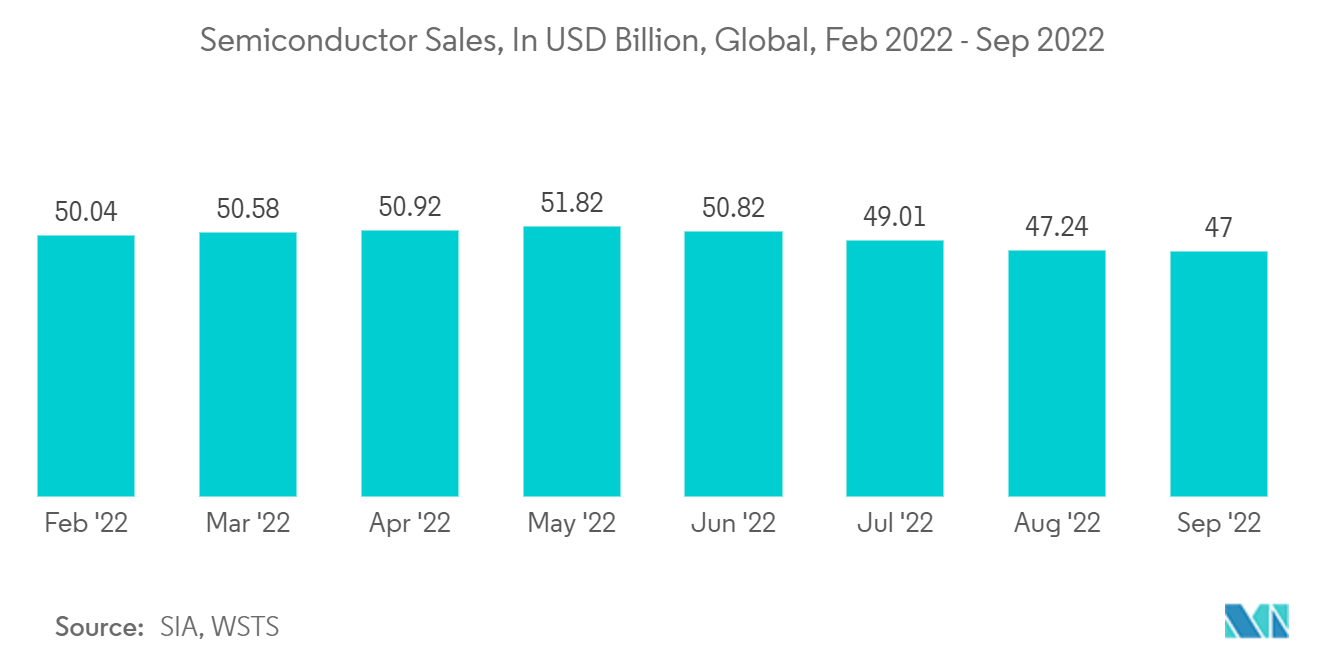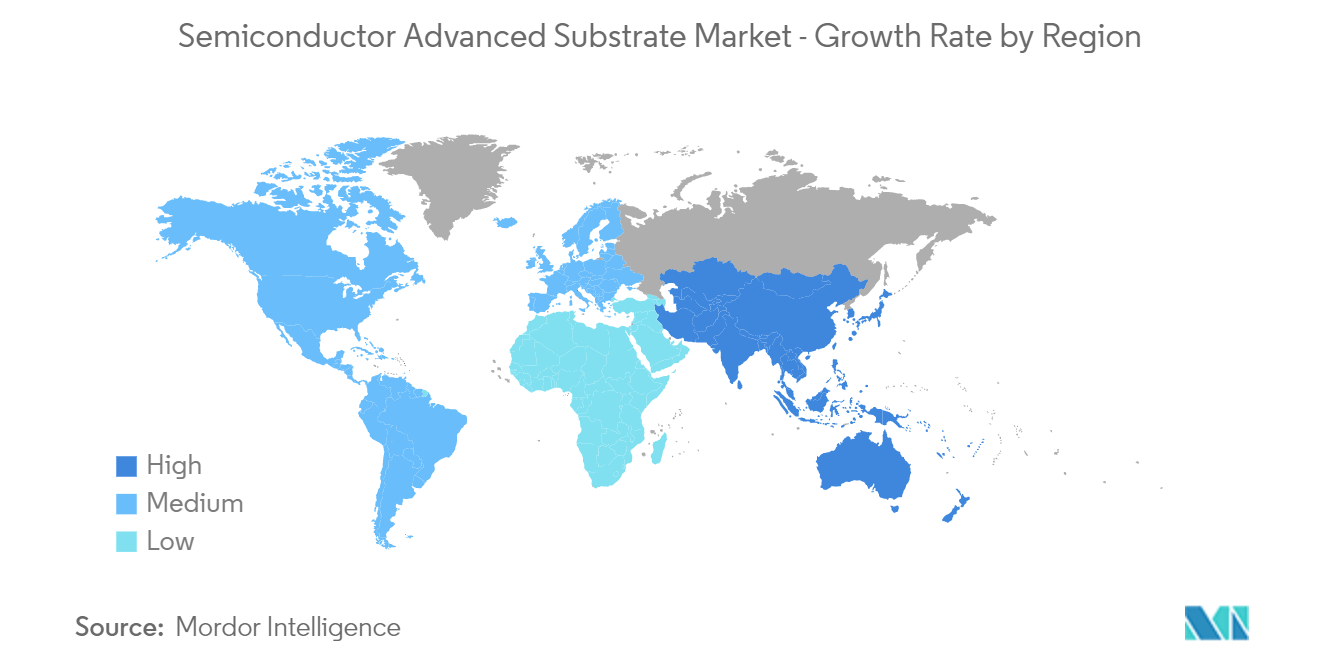Market Trends of Semiconductor Advanced Substrate Industry
FC BGA to Hold the Major Market Share
- A flip-chip ball grid array (FC BGA) is an advanced ball grid array with similar characteristics to CBGA, but bismaleimide triazine (BT) resin is used in FC BGA instead of a ceramic substrate. This also results in the reduction of overall costs. The significant advantage of FC BGA is the shorter electrical pathways compared to other BGA types, which offer enhanced electrical conductivity and faster performance. The tin-to-lead ratio in an FC BGA is generally 63:37. An added advantage of FC BGA is that the chips used on the substrate can be realigned to the correct position without the flip-chip alignment machine approach.
- As the FC BGA has a smaller footprint and less inductance, it is highly suitable for applications like microprocessors, application-based ICs (ASICs), artificial intelligence (AI), and PC chipsets. Network devices (ASICs), data center servers, AI processors, graphic processing units (GPU), gaming consoles, and electric automotive (Infotainment/ADAS) are some of the emerging applications that are expected to increase the adoption of FC BGA during the forecast period. Also, the continuous advancements in end-user products are expected to drive the demand for processors with BGA packaging from OSATs.
- Moreover, in 2021, the demand from 5G base stations and high-performance computing (HPC) applications drove the demand for FC BGA. As the telecom infrastructure in many countries is transitioning to 5G, there are more 5G base stations. These changes are expected to present a massive opportunity for the segment to grow.
- Further, new acquisitions related to the end-user industries and new investments in setting up the factory are expected to drive the market. For instance, in July 2021, South Korean semiconductor company Simmtech Co Ltd via its Malaysian subsidiary, Sustio Sdn Bhd (Sustio), will invest RM 507.78 million (~USD 120 million) to set up its first factory in Southeast Asia at Penang's Batu Kawan Industrial Park, which will further boost the studied market.
- FC-BGA on a high-density semiconductor package substrate enables large-scale high-speed integration (LSI) chips with more functionalities. Therefore, with the increasing demand for LSIs, automotive SoC, and high-end processors in servers, AI, networking device applications, and gaming devices, vendors are actively planning to increase their capacity for the FC BGA.
- For instance, in June 2022, Samsung Electro-Mechanics announced to invest of an additional KRW 300 billion (~USD 225 million) in flip chip ball grid array substrates. The investment will be used in Busan Sejong sites and FC-BGA facilities in the Vietnamese production plant to increase the company's production capacity.

Asia-Pacific to Hold Significant Market Share
- Asia-Pacific holds a prominent share of the market due to a significant number of semiconductor manufacturing operations in the region. The pure-play manufacturers operating in the region are increasing their production capacity to cater to the growing demand from fabless vendors. China is also trying to consolidate its substrate manufacturing market.
- Apart from domestic manufacturers, such as Shennan Circuits Company, the country is home to various IC substrate manufacturing facilities operated by other major vendors, such as AT&S, ASE Group, and many more. In August 2021, China's PCB maker Dongshan Precision Manufacturing announced its plans to invest CNY1.5 billion (~USD 209 million) in establishing a new wholly-owned subsidiary dedicated to the production and sale of IC substrates.
- Further, in June 2021, Shennan Circuits, a printed circuit board maker, announced its plans to invest CNY 6 billion (~USD 837 million) to build a factory in Guangzhou to meet a growing IC packaging demand. The new plant would be able to make more than 200 million flip chip ball grid array packages per year, as stated by the company.
- The growing emphasis on the semiconductor industry by the government of China is leading to an increase in demand for advanced IC substrates. The country has an aggressive growth strategy to meet 70% of China's semiconductor demand with domestic production by 2025. In addition, the 14th Five-Year Plan (2021-2025) for technology independence also supports the goal set by the government.
- The semiconductor sales of the nation are witnessing an uptrend. According to Semiconductor Industry Association, China remained the largest individual market for semiconductors, with sales of USD 192.5 billion in 2021, an increase of 27.1% from last year.


